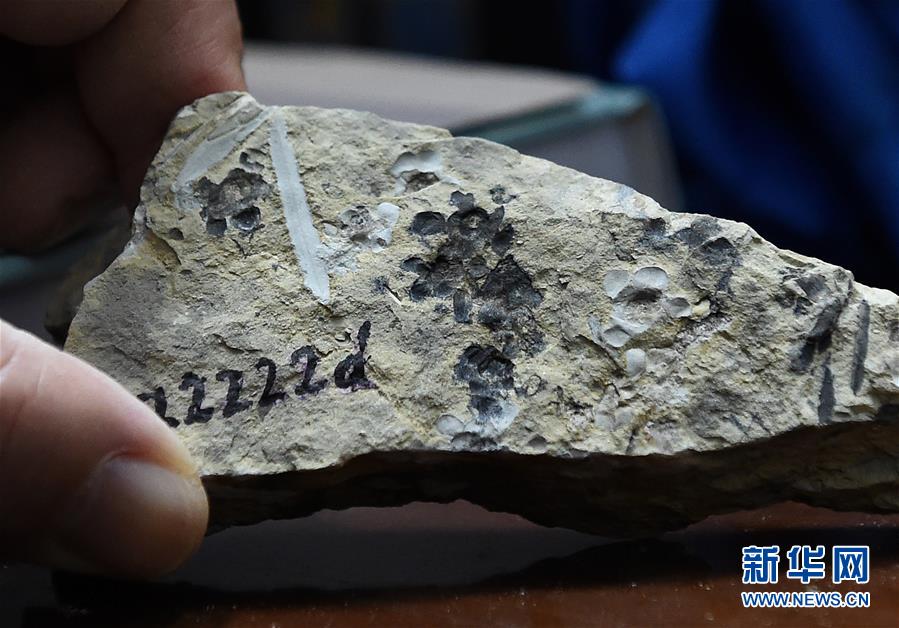At a Christie's auction, bids on a scrappy dog house did what a meteorite had done three years ago: They went through the roof.
The rusty, corrugated tin shelter — with a gaping seven-inch hole on top — went for $44,100 in February, more than double the amount fetched by the extraterrestrial rock that blasted through it. Meanwhile, an extremely rare auction lot — billed as the third-largest Martian rock on Earth and valued at up to $800,000 — failed to find a buyer when the sale closed.
The dog house's sale may reveal something about what drives private collectors to possess the rare objects that fall to Earth from outer space. Beyond their ancient ages and the distance they've traveled is the notion of a close call: Something unexpected and otherworldly fell from the sky, and, in doing so, showed its potential for destruction. Sometimes the reminder of that power is more valuable than the rubble itself.
SEE ALSO:Vigilant amateur asteroid hunters keep watch for menacing space rocks"It's incredibly unlikely for [a meteorite] to actually hit something that's in our day-to-day lives."
"It's incredibly unlikely for [a meteorite] to actually hit something that's in our day-to-day lives," James Hyslop, head of scientific instruments, globes, and natural history at Christie's, told Mashable.

The story behind the dog house began at 9:07 p.m. on April 23, 2019, according to its record in the Meteoritical Bulletin, a publication of peer-reviewed meteorites. That night, a meteorite shower pelted a rainforest in central Costa Rica. Cameras at the summits of volcanoes captured the fireball, an unusually bright meteor. A chunk weighing close to two-thirds of a pound crashed into a German shepherd's abode. Fittingly, his name was Roky.
The Brazilian Meteors Observation Network, University of Sao Paulo, and Sao Paulo State University figured out the trajectory of the meteorite, dubbed "Arguas Zarcas," by reviewing four security videos and dashcam cameras.
A note to concerned dog lovers: Roky survived the ordeal in better shape than his house.
 Roky, a German Shepherd in Costa Rica, wasn't injured by a meteorite that crashed into his dog house in 2019.Credit: Christie's
Roky, a German Shepherd in Costa Rica, wasn't injured by a meteorite that crashed into his dog house in 2019.Credit: Christie'sAppraising these astronomical objects at auction has more to do with a gut feeling, Hyslop admits. The only data Christie's had to guide it was a meteorite-dented mailbox from Claxton, Georgia, that sold for $83,000 in 2007.
A few years ago, Hyslop attended a meteorite exhibition in Paris. Outside in a glass box was a Chevy Malibu that had been struck by the Peekskill meteorite in 1992.
"I just thought that was such a great bit of theater," he said. "It's not just these meteorites that capture our minds. I mean, we all know the story of the asteroid that crashed into Earth and caused the extinction of the dinosaurs. The impact that a meteorite has is a part of the story."
"I just thought that was such a great bit of theater."
 A meteorite struck a Chevy Malibu in 1992.Credit: Ingo Wagner dpa / Picture Alliance / Getty Images
A meteorite struck a Chevy Malibu in 1992.Credit: Ingo Wagner dpa / Picture Alliance / Getty ImagesScientists estimate that about 48.5 tons of billions-of-years-old meteor material rain down on the planet daily, much of which vaporizes in Earth's atmosphere or falls into the ocean, which covers over 70 percent of the planet.
More than 60,000 meteorites have been discovered on Earth. The vast majority come from asteroids, but a small sliver, about 0.2 percent, come from Mars or the moon, according to NASA. At least 175 have been identified as originating from the Red Planet.
In order for meteorites to get formally documented, the owner must give a large piece of it to an internationally authorized institution, such as a natural history museum. The institution will cut off a piece to preserve for enduring scientific research.
"The impact that a meteorite has is a part of the story."
 An "Aguas Zarcas" space rock that smashed into a dog house sold at auction for $21,420 on Feb. 23, 2022.Credit: Christie's
An "Aguas Zarcas" space rock that smashed into a dog house sold at auction for $21,420 on Feb. 23, 2022.Credit: Christie'sChristie's auctioned a piece of Roky's rock that weighed half as much as the weight recorded in the Meteoritical Bulletin. The meteorite is mostly covered in a fusion crust, caused by its fiery descent through Earth's atmosphere. Its front face features a reddish-brown streak from when it crashed through the oxidized tin roof of the dog house. The meteorite, composed of carbon compounds, sold for $21,420.
When Hyslop saw the unique remnants of the Costa Rican crash in the gallery, he thought it looked like an art installation.
"For me," he said, "it fits very comfortably alongside some very cool contemporary artworks of the moment."
TopicsNature
(责任编辑:百科)
 Teacher absolutely nails it with new homework policy
Teacher absolutely nails it with new homework policy Stormzy fires furious freestyle against UK Prime Minister Theresa May
Stormzy fires furious freestyle against UK Prime Minister Theresa May Apple Watch Series 3 now tracks skiing and snowboarding performance
Apple Watch Series 3 now tracks skiing and snowboarding performance Student asks boyfriend to buy her some new leggings, things escalate quickly
Student asks boyfriend to buy her some new leggings, things escalate quickly 'The Flying Bum' aircraft crashes during second test flight
'The Flying Bum' aircraft crashes during second test flightFelix the cat just raised £5000 for charity because she's the hero we all need
 LONDON -- Remember Felix, the Huddersfield train station cat who got promoted to Senior Pest Control
...[详细]
LONDON -- Remember Felix, the Huddersfield train station cat who got promoted to Senior Pest Control
...[详细]Stormzy fires furious freestyle against UK Prime Minister Theresa May
 Stormzy is one of the hottest grime artists in the UK. Live at the Brit Awards on Wednesday night, h
...[详细]
Stormzy is one of the hottest grime artists in the UK. Live at the Brit Awards on Wednesday night, h
...[详细]Snow storm over London looks like a nightmare tidal wave in police helicopter footage
 You know those disaster movies where it's blue sky one minute, hellish storm clouds the next?Well th
...[详细]
You know those disaster movies where it's blue sky one minute, hellish storm clouds the next?Well th
...[详细]Airbnb introduces Airbnb Plus and new 'luxury' services for travelers
 Airbnb is about to get a lot fancier. Today, the company is introducing two new services aimed at mo
...[详细]
Airbnb is about to get a lot fancier. Today, the company is introducing two new services aimed at mo
...[详细]There's a big piece of fake chicken stuck to this phone case
 If the perfect smartphone case signals a bit about who its owner is, then this silicon fried chicken
...[详细]
If the perfect smartphone case signals a bit about who its owner is, then this silicon fried chicken
...[详细]Google testing new Material design for search results, says report
 Google search results -- one of the most often used tools on the internet -- may soon get a new look
...[详细]
Google search results -- one of the most often used tools on the internet -- may soon get a new look
...[详细]Donald Trump thinks he's the first person to come up with movie ratings
 The President of the United States of America, having heard that video games and movies sometimes co
...[详细]
The President of the United States of America, having heard that video games and movies sometimes co
...[详细]Apple Watch Series 3 now tracks skiing and snowboarding performance
 Skiers and snowboarders, the Apple Watch is your new best friend. Apple announced on Wednesday that
...[详细]
Skiers and snowboarders, the Apple Watch is your new best friend. Apple announced on Wednesday that
...[详细]Olympic security asks female Iranian fan to drop protest sign
 Olympic security personnel questioned a female Iranian volleyball fan Saturday when she showed up fo
...[详细]
Olympic security personnel questioned a female Iranian volleyball fan Saturday when she showed up fo
...[详细]How to turn off Facebook's new face recognition features
 Facebook has been giving users a scare as people have started noticing a notification in its mobile
...[详细]
Facebook has been giving users a scare as people have started noticing a notification in its mobile
...[详细]U.S. pole vaulter skids to a halt for national anthem

Arctic warm event stuns scientists, as record warmth reaches North Pole
